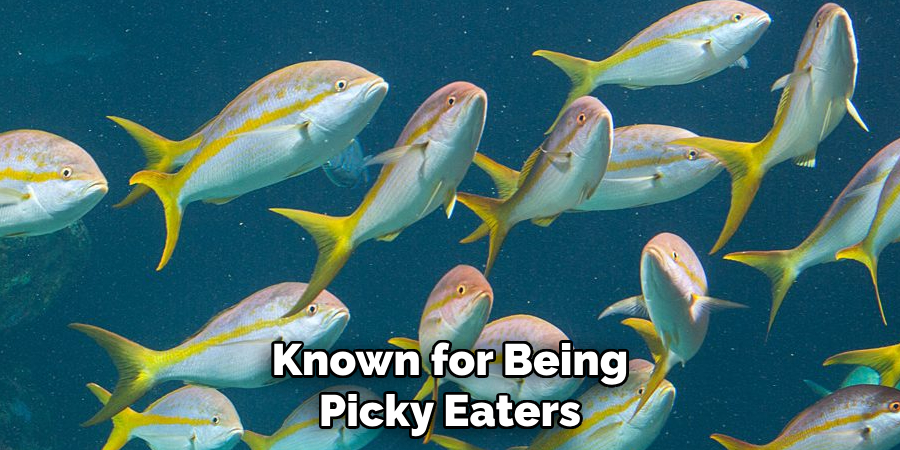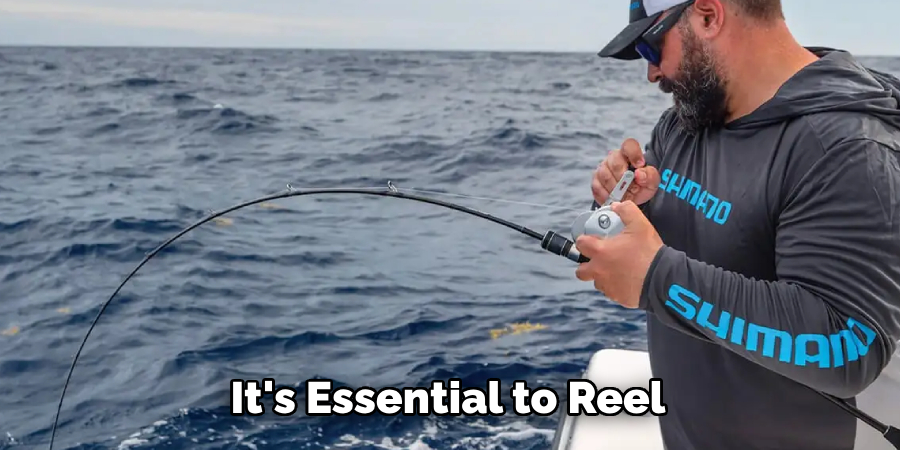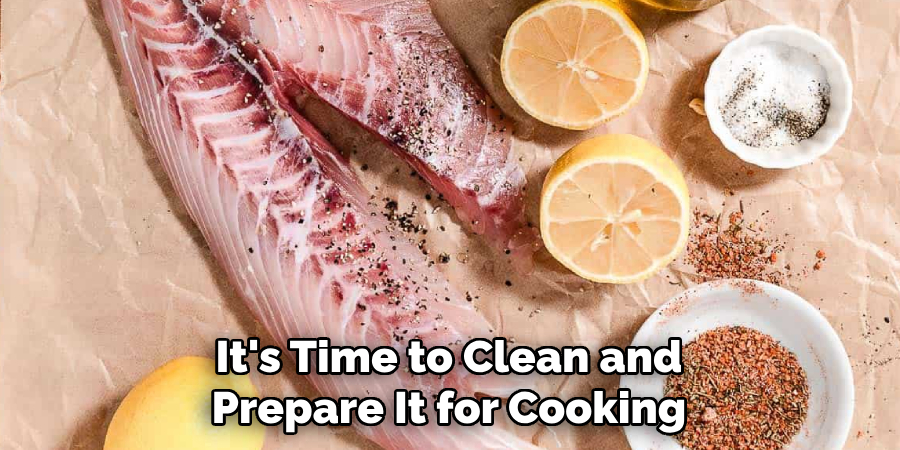Are you planning to go fishing and catch some yellowtail snapper? If yes, then you have come to the right place! Here, we will take you through successfully catching a yellowtail snapper.
Yellowtail snapper is a prized fish among anglers, known for its vibrant colors, delicious taste, and spirited fight on the line. Found primarily in tropical and subtropical waters, especially around reefs and wrecks, these fish require a combination of strategy and skill to catch. Whether you’re an experienced fisherman or a beginner, targeting yellowtail snapper is a rewarding challenge.

This guide on how to catch yellowtail snapper will provide essential tips, techniques, and gear recommendations to help you maximize your chances of success while fishing for these beautiful and elusive fish.
What Are the Benefits of Catching Yellowtail Snapper?
Catching yellowtail snapper offers many benefits, making it a popular target for fishermen. Here are some reasons why you should consider targeting these fish on your next fishing trip:
- Delicious Tasting Fish: Yellowtail snapper is considered one of the tastiest fish, with its sweet and mild white meat perfect for grilling, baking, or frying.
- Exciting Fight: These fish are known for their spirited fight on the line, providing an adrenaline rush to any angler lucky enough to hook one.
- Abundant Population: Due to successful management efforts, yellowtail snapper abundance has increased in recent years. This means there are plenty of fish to catch, making it a sustainable and responsible fishing choice.
- Beautiful Fish: With its vibrant yellow scales and striking eyes, the yellowtail snapper is a visually appealing fish that makes for great photos and memories.
What Will You Need?
Before heading out to catch yellowtail snapper, make sure you have the following essential gear:
- Fishing Rod and Reel: A medium-heavy or heavy spinning rod with a fast action tip is recommended for targeting yellowtail snapper.
- Fishing Line: Use 20-30 lb monofilament or fluorocarbon line, as these fish have sharp teeth that can easily cut through lighter lines.
- Hooks: Use size 1/0 or 2/0 circle hooks to minimize injury to the fish and increase the chances of successful hooking.
- Weights: Yellowtail snapper typically feeds close to the bottom, so weigh between ½ to 2 ounces depending on the water depth and current.
- Baits/Lures: Live baits such as pilchards, ballyhoo, or shrimp work best for yellowtail snapper. If using lures, try bright-colored jigs or topwater plugs to mimic their natural prey.
- Fishing License: Ensure you have a valid fishing license for the state or country where you will be fishing.
Once you have your gear ready, it’s time to head out and start targeting these delicious fish!

9 Easy Steps on How to Catch Yellowtail Snapper
Step 1. Choose the Right Location:
Yellowtail snappers are typically found in tropical and subtropical waters, most commonly around coral reefs, rocky structures, and ledges. They thrive in areas with clear, warm water and plenty of hiding spots to congregate. The Florida Keys and parts of the Caribbean are renowned hotspots for yellowtail snapper fishing.
Look for areas with a depth of 30-120 feet, as they tend to hover near the bottom but can also be spotted in mid-water. A depth or fish finder can help pinpoint schools of fish and ideal reef locations. If you’re unsure where to go, consider asking local bait shops or hiring a guide familiar with the best fishing spots in the area.
Step 2. Use the Proper Bait:
Yellowtail snappers are known for being picky eaters, so selecting the right bait is crucial. Fresh bait such as shrimp, squid, or small chunks of cut baitfish like sardines and ballyhoo often works best. For even better results, consider using live bait, which naturally draws their attention due to its movement.
Chumming is also an effective technique for attracting yellowtail snapper, as it disperses small particles of fish or other bait into the water, creating a feeding frenzy. Be sure to use a fine chum mixture and scatter it consistently to keep the fish engaged around your fishing area.

Step 3. Choose the Right Tackle:
Using the appropriate fishing tackle is essential when targeting yellowtail snapper. A light spinning rod and reel combo is ideal, as it provides the sensitivity needed for detecting subtle bites that yellowtail are known for.
Opt for a fluorocarbon leader, as it is nearly invisible underwater and decreases the chances of spooking the fish. Hook sizes range between #2 and #4, depending on the size of the bait being used. Proper tackle improves your chances of successfully landing a catch and ensures you can handle these agile and feisty fish without losing them.
Step 4. Present Your Bait Effectively:
Proper bait presentation is critical when fishing for yellowtail snapper. These fish can be cautious and selective, so hook the bait in a way that makes it appear natural in the water. Live bait, such as shrimp or small baitfish, can be hooked through the tail or just behind the dorsal fin to allow for natural movement.
If you’re using cut bait, ensure the pieces are small enough to entice the snapper but not so large as to deter them. Drift your bait slowly in the current and be patient, as this method often mimics the flow of chum, further attracting the fish to bite.
Step 5. Reel Them in Carefully:
Once you’ve hooked a yellowtail snapper, it’s essential to reel it in with care to avoid losing your catch. These fish are known for their quick and agile movements, so keep steady pressure on the line to prevent slack, which could allow the fish to escape.
Use a smooth reeling motion and avoid jerking the rod too forcefully, which can cause the hook to tear free. If the fish makes a sudden run, give it some line to avoid breaking it, but remain in control throughout the process. Patience and finesse are key to successfully landing your catch and ensuring it remains secure as you bring it on board.
Step 6. Handle Your Catch Properly:
After successfully reeling in a yellowtail snapper, it’s essential to handle it properly to ensure both the fish’s quality and your safety. Use a pair of gloves or a damp towel to hold the fish securely, as their slippery scales can make them difficult to grip.
Carefully remove the hook using pliers or a hook remover, ensuring minimal harm to the fish if you plan to release it. If keeping the catch, store it immediately on ice to preserve its freshness. Proper handling assures a quality meal and reflects respect for the catch and sustainable fishing practices.
Step 7. Clean and Prepare Your Yellowtail Snapper:
Once you have safely transported your catch, it’s time to clean and prepare it for cooking or storage. Begin by scaling the fish with a scaling tool or the back of a knife, moving from the tail toward the head. Next, make an incision along the belly and carefully remove the entrails, rinsing the cavity with cold, clean water.

If you prefer fillets, use a sharp filleting knife to cut along the backbone and separate the meat into clean portions. Ensure your working area and tools are sanitized to maintain food safety. Proper preparation enhances the flavor and ensures a delightful culinary experience.
Step 8. Cooking Your Yellowtail Snapper:
There are numerous ways to cook yellowtail snapper, each highlighting its delicate flavor and tender texture. Popular methods include grilling, baking, pan-searing, or steaming. Season the fish with salt, pepper, and your favorite herbs or spices for a simple and delicious preparation, then drizzle it with olive oil and lemon juice.
Grill on medium heat for 4-5 minutes per side or until the flesh is opaque and flakes easily with a fork. Alternatively, baking the fish in a preheated oven at 375°F for about 20 minutes offers a hands-off method that retains moisture and enhances its natural flavors. Pair your cooked yellowtail snapper with fresh vegetables, rice, or a light salad to create a satisfying and flavorful meal.
Step 9. Serving Your Yellowtail Snapper:
Presentation is key to elevating your dish and providing a memorable dining experience. Place the cooked yellowtail snapper on a serving plate and garnish it with fresh herbs like parsley or cilantro for a pop of color and flavor.
A wedge of lemon on the side adds a refreshing touch and allows guests to adjust the citrus. Pair the fish with your choice of accompaniments, such as roasted vegetables, garlic-infused mashed potatoes, or a tangy mango salsa for a tropical twist. Serve immediately to fully enjoy this exquisite dish’s vibrant flavors and tender texture.
Following these steps and tips can increase your chances of successfully targeting and catching yellowtail snapper on your next fishing trip.

Conclusion
How to catch yellowtail snapper is both a rewarding and enjoyable experience for anglers of all skill levels.
By understanding their behavior, using the right bait, and employing effective techniques, you can significantly improve your chances of success. Patience, preparation, and attention to detail are key to a fruitful fishing trip. With the steps outlined in this guide, you can confidently set out to catch yellowtail snapper and enjoy the thrill of reeling in this prized fish.
Whether you’re a seasoned angler or a novice, mastering these skills will make your next fishing adventure all the more satisfying.
About the Author
Jennifer Branett is the author of Fishy Kayak and an expert in fish-related fields, with over 10 years of experience. Her work blends passion for fishing with a commitment to conservation.
Educational Background
Degree: Bachelor’s in Marine Biology
Institution: University of California, Santa Barbara
Specializations: Aquatic ecosystems, fish behavior, and sustainable practices
Professional Experience
Conservation Projects:
Collaborated with local organizations to restore aquatic habitats
Developed educational programs on sustainable fishing practices
Publications:
Authored articles for fishing magazines and environmental journals
Featured speaker at fishing expos and conservation conferences
Key Areas of Expertise
Fishing Techniques:
Kayak fishing strategies
Freshwater and saltwater fishing methods
Environmental Stewardship:
Advocacy for sustainable fishing
Promoting biodiversity in aquatic environments
Awards and Recognition
Recipient of the [Specific Award Name] for contributions to marine conservation
Recognized as a leading voice in the fishing community by [Organization/Publication Name]
Community Engagement
Workshops and Seminars:
Regularly hosts events to educate anglers on sustainable practices
Engages with youth programs to inspire the next generation of fishers
Online Presence:
Maintains an active blog sharing tips, stories, and conservation efforts
Engages with followers on social media to promote fishing ethics
Personal Interests
Enjoys kayaking in scenic locations
Passionate about photography, capturing the beauty of nature
Advocates for local conservation efforts in her community
